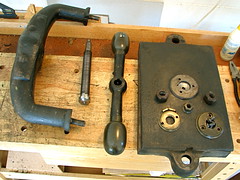Obviously, you'll want to start with the Adobe website careers page:
This is not April 1, and I'm not joking. That is their real careers page, right now.
"Together we’re turning engaging digital experiences into more valuable interactions every day — across media and devices, anywhere, anytime."
Uh, not so much, actually.
Hilariously, this came to light (via Daring Fireball) because of a tweet from John Dowdell at Adobe:
"I know that a number of good people work at Apple. If you’re seeking a more ethical company, Adobe is hiring: adobe.com/aboutadobe/careeropp"You are trying to attract Apple employees through a careers page that doesn't work on Apples. There's a phrase for that, John, and I know it's overused, but it has to be said: Epic. Fail.
PS Hey, they didn't mention iPhone. Maybe it works fine on the iPhone... ?






